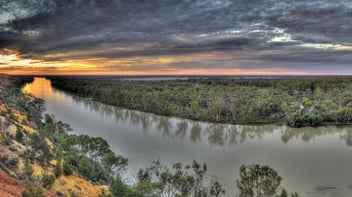Collaboration makes for better research results in the coolest place on Earth
In her role as a knowledge broker with CSIRO Oceans and Atmosphere in Hobart, Dr Jess Melbourne-Thomas is working on turning important research into valuable outcomes.
It’s a perfect fit for the scientist, who has spent much of her career developing marine ecosystem models as a project leader at the Australian Antarctic Division and the Antarctic Climate and Ecosystems Cooperative Research Centre.
She describes these models as “flight simulators” that help researchers evaluate what marine ecosystems might look like under different future scenarios.
But it’s not just theoretical; the modelling can also be used to help test different management strategies, and inform where and how to invest in further research and monitoring.
“This role is a culmination of where I’ve been heading with much of the work I’ve done previously,” Melbourne-Thomas said.
“It’s about how we can improve the way we collaborate and work with stakeholders to create closer connections between science, policy and practice to achieve better outcomes.”
Although most researchers want to see their science used, Melbourne-Thomas said it can be difficult to get their findings to the right people, which is why jobs like hers exist.
“There’s an increasing recognition that it’s not enough to just do the science and publish it in a journal and hope someone picks it up,” she said.
“It needs to be well connected to the spheres where decisions are actually made, so that the knowledge is implemented and used.”
 Melbourne-Thomas has spent much of her career developing marine ecosystem models. Peter Kimball/Australian Antarctic Division.
Melbourne-Thomas has spent much of her career developing marine ecosystem models. Peter Kimball/Australian Antarctic Division.
As well as acting as a facilitator on different projects, Melbourne-Thomas is also a transdisciplinary researcher tasked with conducting her own science and figuring out how to make the process more effective.
She says by working more closely with stakeholders – whether it’s communities, industry, Indigenous groups or NGOs – scientists are able to get better results, both in the quality of their research and the impact it can make.
“The term that gets used is ‘knowledge co-production’,” she said. “If research is a collaborative process, you get better outcomes.”
Supporting women in STEM
With a PhD in Quantitative Marine Science, a two-year stint as a Rhodes Scholar at the University of Oxford, and the title as one of Science and Technology Australia’s 30 STEM superstars of 2017, Melbourne-Thomas has an extensive CV. And she’s eager to share what she’s learnt with other women.
She said her passion for promoting women in STEM comes from her own experiences working in a field that combines ecosystem science with maths – both areas that were previously male dominated.
“Antarctic science has also been traditionally male dominated; in the past, it was harder for women to work in polar regions,” Melbourne-Thomas said.
It was for this reason that she co-founded the Women in Polar Science community, a global network promoting the work of women in the polar regions, as well as the Homeward Bound initiative.
This course with a cool twist sends women in STEMM (science, technology, engineering, maths and medicine) on a voyage to Antarctica to help equip them with the leadership and communications skills they need to solve ‘wicked’ problems.
The founders chose Antarctica not only because it is such an important region to study climate change, but also because of the awesomeness of the landscape.
“Antarctica has been able to tell us so much about what past climates looked like and how different the current rates of change are,” Melbourne-Thomas said.
“And being in those places really puts everything in context. It helps you think about the reality of what’s changing and the different species that are being impacted by environmental changes.”
STEM fields also have high rates of attrition for women. According to a report from Australia’s Office of the Chief Scientist, about 40% of junior STEM academics are women, but this drops to just 17% at a professorial level.
This leaky pipeline can’t be attributed to any single factor, but Melbourne-Thomas said a focus on more flexible working arrangements could help keep more women in STEM and help them progress to higher levels.
She said this is important as some of the biggest challenges facing the world in the future, particularly around adapting to the impacts of climate change, will require strong STEM teams.
“We know that diverse scientific teams that have a good balance of men and women, as well as all different kinds of backgrounds, actually deliver better outcomes because it results in a diversity of approaches and ways of thinking,” Melbourne-Thomas said.
“That’s something we really need to better tackle some of the problems we’re facing.”
Related video:
https://www.youtube.com/watch?v=QFDgnLbQlQk

